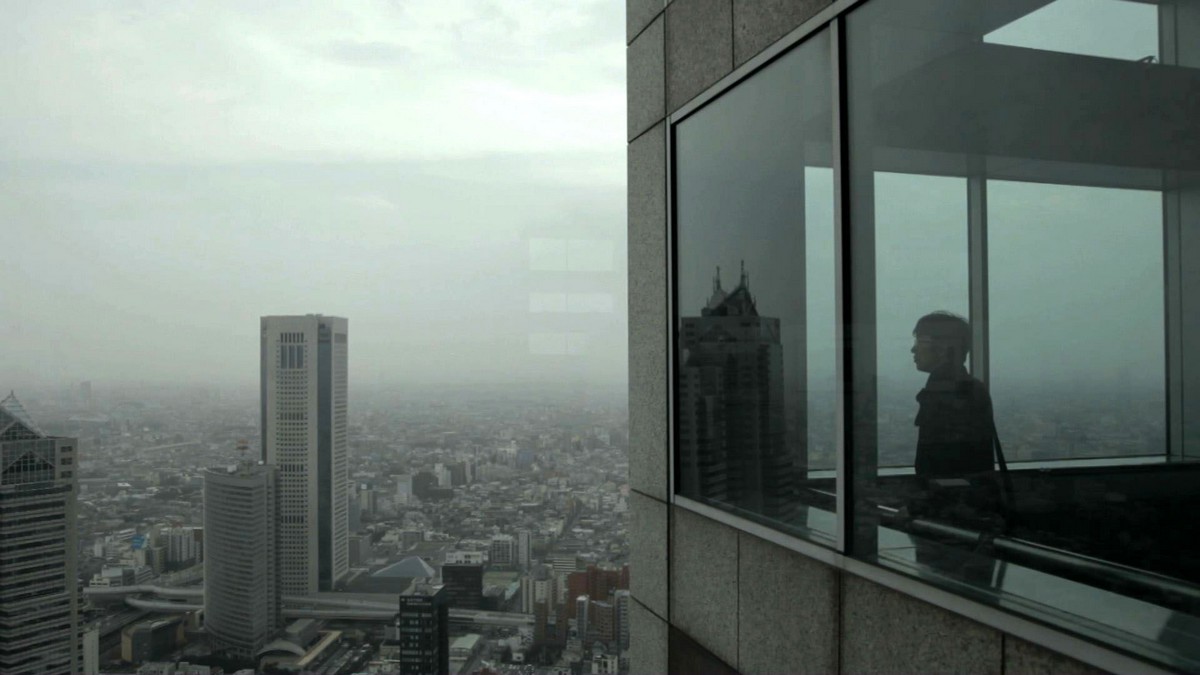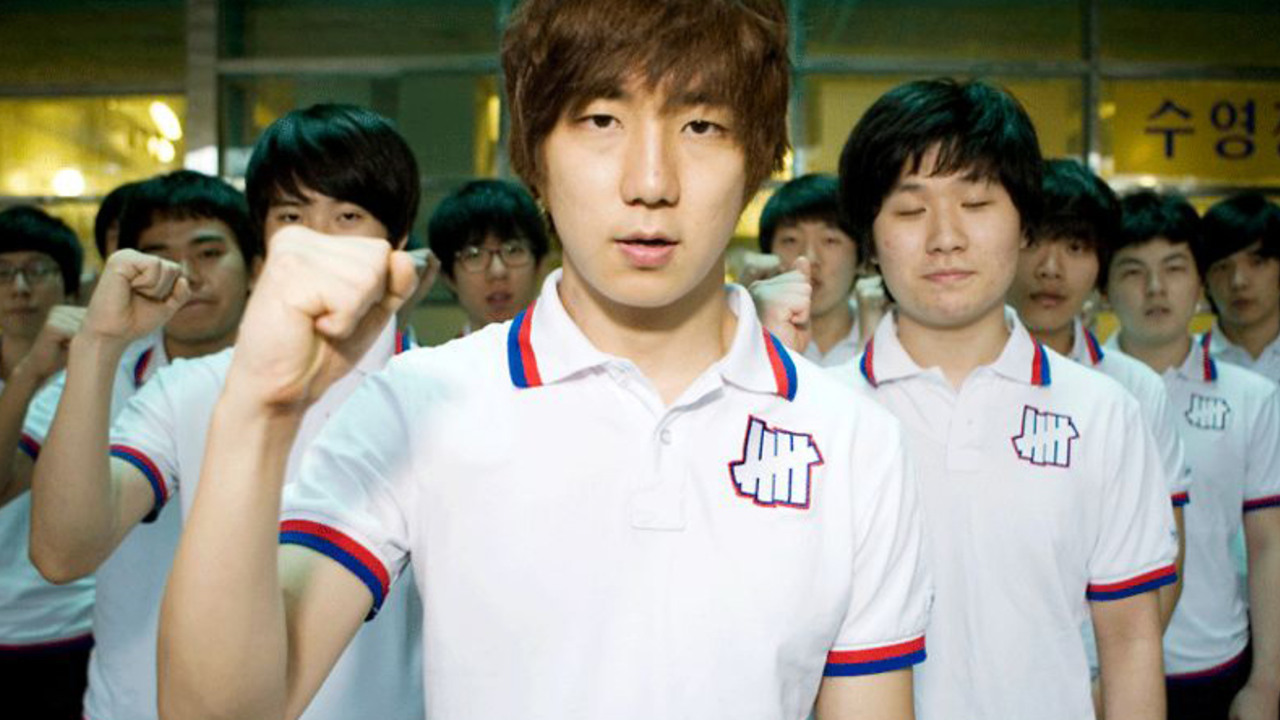What is the situation of the youngsters? It doesn’t exactly have equilibrium March 19, 2015
The characters in Hikikomori, a deafening silence and State of Play appear to be opposites. Japanese “antiheroes” who have spent years between the four walls of their homes and have given up on everything versus professional Korean gamers who enjoy the fame that follows them upon getting to the top of their careers before reaching adulthood.
Pille Runnel, festival director
The characters in Hikikomori, a deafening silence and State of Play appear to be opposites. Japanese “antiheroes” who have spent years between the four walls of their homes and have given up on everything versus professional Korean gamers who enjoy the fame that follows them upon getting to the top of their careers before reaching adulthood.
Hikikomori is a term used to describe those from half to one million Japanese people who have spent months or even tens of years between the walls of their homes – their average age is 31 and only one fifth of them are women.
The reasons behind this behaviour are thought to be derived from mental health, whether it is social phobia or an autism spectrum disorder. There are others who say that the youngsters living at the expense of their parents have just failed in life. The most optimistic explanation is that hikikomoris have rather discovered independent thinking and self-reliance, which the modern Japanese society is simply unable to embrace. All three explanatory models are based on the idea that the problem lies in the hikikomoris themselves. But does it?
Directors Dorothée Lorang and David Beautru do not say anything, they just observe their characters. The characters’ comments play an important role in the film, guiding the viewers into their world step by step. Parents of the first hero have not heard their son’s voice for years (namely 5) - that is for how long the originally vigorous and ambitious young man was tucked in segregation in his room.
The story begins to unfold in a unique Japanese rehabilitation centre for hikikomoris, where the once separated from the world, are taught to re-create contact with the society. Getting there is probably the most important step of the journey since this step has to be made by the hikikomori itself. One of the residents was able to do so after finding a letter from their parents: “You should find a job. You cannot live here any more, it is not a solution.” Another found his way to the centre after living many years with the knowledge that he cannot just have any job, because he must not embarrass the mother who had raised him. And finally, a fellow sufferer who argues that once he is ready to leave the centre, there is only work waiting for him. He speculates: “Worst case scenario: I collapse from overworking,” since this has happened to him before. He is a bit worried whether he is good enough.
Jobless Drama Company, a theatre group for the unemployed who do not attend any schools (NEETs) also makes an appearance on stage: “Work has made this country very strange. Work and you will go to hell.” An actor summarizes: “If you work and get paid for it, you are considered responsible by the society.” Mister Futagami, a mentor sitting among the spectators adds: “While in Christianity work is a penalty for eating the forbidden fruit; the Japanese are peculiar for being grateful for it.” He finds that even though the Japanese work and earn a lot, they should rather enjoy being poor: “That is the key to happiness in the 21th century.”
Still from Hikikomori, a deafening silence
State of Play
What happens when play becomes work? In sharp contrast to the previous image, but also about the search for worthiness amongst the generation who have no jobs and sometimes lack education, State of Play by Steen Dhoet tells a story about the professional Korean gamers and their last season of Starcraft I. E-sports are not as common in Estonia yet, thus sports fans are not cheering to its seasons on the television or in the sports news section. Nor are we familiar with the hysterical tumult that goes along with a strategy game called Starcraft I in South Korea. Estonian primary school boys are not leaving school to start as amateur gamers in the hopes of earning annual salary of 135000 euros in few years – that was the sum of money one of the protagonists in State of Play made after joining the Proleague.
The majority of Koreans dutifully follow the path from primary school to university set by their parents, knowing that education is the basis for future success. For some more daring Korean schoolboys choosing the other path – joining the Proleague – is the highway to fulfilling their dreams. Whilst on the highway, stopping to enjoy their success is not possible. The stakes are high and one that takes a time out leaves the game.
Suddenly it is time to start making preparations for retirement leave. One of the pros in Starcraft asks: “How many professions are there where people retire at the age of 28?” For the first time in their life, they are worried about their future, contemplating on what the true passion of their life is – because actually, it would be convenient to just sit and watch TV. Being at the top of their career with such high stakes is somewhat as severe of a form of social exclusion as it is experienced by the Japanese Hikikomori. During the period their friends attend school and get their first girlfriends, the pro gamer can only become even better and work hard for it, without knowing whether it is ultimately just a waste of time. Friends call less and less.
Still from State of Play
Two sides of the same coin
It begins to become clear that the two films with contrasting characters have the same protagonist – work. Incessant working that is not actually controlled by the society and which makes that society vulnerable. Successful Japanese pro gamers and youngsters that have locked themselves behind home walls are the two sides of the same coin.
Thankfully, neither of the directors dives into the complex social processes, allowing the viewers to enjoy the engaging stories with peculiar characters. However, both films have a global dimension. Behind personal choices or lack thereof is the economic dependence on their parents which is related to extending studies as well as unemployment pressure and the desire to break out of it. Researchers of the behaviour of the young claim that today’s youngsters have been left without a generational and subcultural identity and the related confidence with which, for example, the generations of the 1960s and 1970s grew up with. So the young people of nowadays’ advanced societies make the far-reaching and future-decisive decisions based on personal projects and resources. Playing computer games can be converted into elite sports.
Although it seems that of the characters from these two film such a fundamental change in the social environment has mostly affected the hikikomori, it has an effect on the South Korea video game stars as well. Being more or less financially stable they retire as young-bloods and thus have to start over. Both films concern the generation that has chosen the unconventional way for growing up – at least according to the public’s opinion. Sociologist Aurelie Mary concludes that our understanding of the objectives of being young and growing up are still guided by the norms that developed in the post-war decades in the 1950-1960s. This was the era when the societies of developed countries experienced unprecedented prosperity growth. Each youngster was in all probability to finish school, quickly become independent, find a permanent job and create their own family. Although today this may happen in a different order or not at all, the post-war decades are still the ideal. For bystanders, these young people who fail to respond to these ways of becoming an adult seem to be practising self-sabotage.
Hikikomori and State of Play portray growing up in a more unstable, less trustworthy and highly competitive society. Finding a job there can be as difficult as it is to join the Proleague and stay there for a young Korean video game fanatic. These are films about social engagement – of the possibility to accomplish something according to personal abilities and wishes. They are also stories about the vulnerabilities of modern Asian societies. Hikikomoris portray the threat to degrade into primary particles of the society who react to nothing. While video gamers are at the other extreme, they are still only “stars” under certain conditions in their own virtual reality, which can collapse at any moment. Their lives are similar to computer games in the sense that the player’s “invulnerability” or god mode is usually temporary.
PS! According to the Youth monitoring yearbook 2012, there are about 35000-40000 youngsters in Estonia who neither work nor study and thereby experience social exclusion. In Estonia and in Europe this number is growing.

